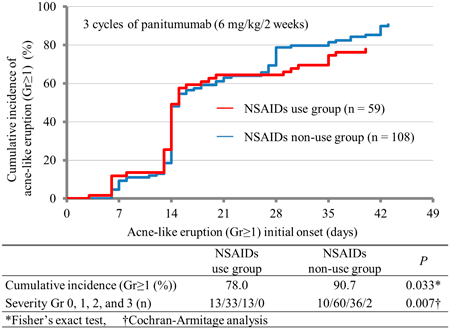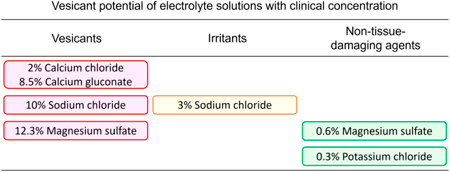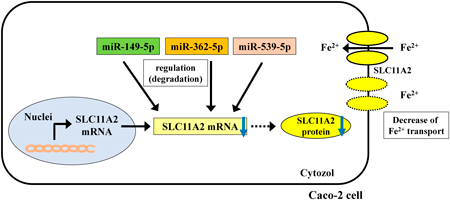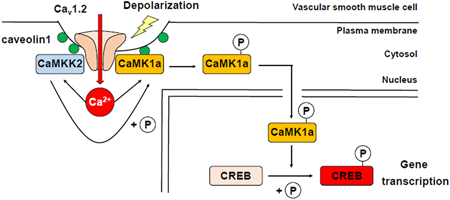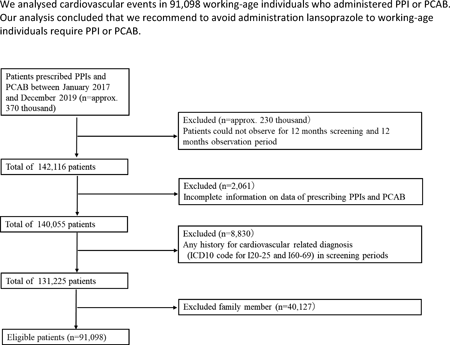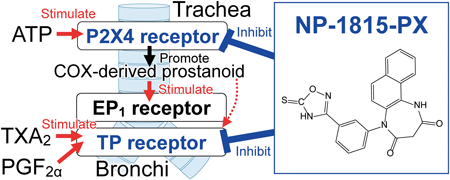-
45 巻 (2022) 12 号 p. 1791-1797Testicular Hypoplasia with Normal Fertility in Neudesin-Knockout Mice もっと読む編集者のコメント
Neudesin is a secretory protein, originally identified as a neurotrophic and neuroprotective factor. Although neudesin is widely expressed in various organs in mammals, its function in the tissues other than the nervous system and adipose tissues remains unknown. In this manuscript, the authors examined the phenotype of Neudesin-knockout mice and found a testicular hypoplasia emerging from early postnatal stages. Despite the smaller testes in the adult Neudesin-knockout males, they produced healthy sperm and retained their fertility. This study revealed a novel function and versatility of neudesin.
-
45 巻 (2022) 12 号 p. 1798-1804OX40 Ligand-Mannose-Binding Lectin Fusion Protein Induces Potent OX40 Cosignaling in CD4+ T Cells もっと読む編集者のコメント
T cells play important roles for protection against infection and cancer. Upon interaction with OX40 ligand (OX40L, TNFSF4), OX40 expressed by activated T cells promotes the production of long-lived memory T cells. However, it remains unclear how better activity of OX40 can be induced by a designer OX40L protein. A soluble OX40L possessing a collagenous trimerization domain from mannose-binding lectin was prepared in this study, and this novel protein functioned as a superior agonist both in vitro and in vivo. The authors propose that activity of OX40L can be engineered to elicit robust T cell responses by rational structural design.
-
編集者のコメント
Bevacizumab is a monoclonal antibody that blocks VEGF receptors, thereby inhibiting angiogenesis in cancer cells and stopping tumor growth. However, bevacizumab inhibits signaling pathways involved in angiogenesis, which may lead to central nervous system (CNS) ischemia. However, its definitive characteristics have not been elucidated. Therefore, authors analyzed the JADER database to determine the incidence and characteristics of CNS ischemia in patients receiving VEGF inhibitors. Significant signals associated with CNS ischemia were detected in patients receiving bevacizumab. The results also suggested that bevacizumab-associated CNS ischemia was associated with a diagnosis of glioma, underlying hypertension, and aging.
-
編集者のコメント
Lipopolysaccharide (LPS) treatment induces hemophagocytic lymphohistiocytosis(HLH)-like features, including pancytopenia, in senescence-accelerated mice (SAMP1/TA-1). Prolonged hyper-inflammation in LPS-treated SAMP1/TA-1 severely impaired the hematopoietic microenvironment in the bone marrow (BM), disrupting the dynamics of hematopoiesis. Macrophages are major components of hematopoietic microenvironment, and the balance of pro-inflammatory macrophages (M1) and anti-inflammatory macrophages (M2) governs the inflammatory process. In this study, the authors showed that LPS treatment led to severely imbalanced M1 and M2 macrophage polarization and prolonged monocyte-macrophage hyper-production in the BM of SAMP1/TA-1, resulting in severe and persistent inflammation in the BM hematopoietic microenvironment, and disruption of the dynamics of hematopoiesis.
-
45 巻 (2022) 11 号 p. 1627-1635The Impact of Eribulin on Stathmin Dynamics and Paclitaxel Sensitivity in Ovarian Cancer Cells もっと読む編集者のコメント
Stathmin, a microtubule destabilizing protein, may modulate the antiproliferative activity of eribulin, a microtubule dynamics inhibitor, in ovarian cancer. The authors investigated the function of stathmin in the antitumor effect of eribulin in ovarian cancer. In the cancer xenograft model and cultured cancer cells, eribulin treatment decreased tumor weight and increased phosphorylated stathmin mediated in part by downregulation of protein phosphatase 2A. Eribulin-induced phosphorylation of stathmin may also enhance the antiproliferative effect of paclitaxel. These results suggest that eribulin may inhibit proliferation of ovarian cancer cells in part by modulating stathmin activity.
-
45 巻 (2022) 11 号 p. 1660-1668Feasibility Study of Dendrimer-Based TTR-CRISPR pDNA Polyplex for Ocular Amyloidosis in Vitro もっと読む編集者のコメント
Hereditary amyloidogenic transthyretin (ATTR) ocular amyloidosis, an intractable disease, is caused by ATTR production from retinal cells. Therefore, development of novel therapeutic agents is urgently needed. In this study, folate-modified dendrimer/cyclodextrin conjugates (FP-CDE) were prepared and their ability to deliver plasmid DNA encoding the TTR-targeted genome editing CRISPR-Cas9 system (TTR-CRISPR pDNA) was investigated. As a result, FP-CDE/TTR-CRISPR pDNA complex was taken up by retinal pigment epithelial cells, exerted ATTR amyloid suppression, and inhibited TTR production through genome editing effect. Taken together, FP-CDE may be useful as a novel therapeutic TTR-CRISPR pDNA carrier in the treatment of ATTR ocular amyloidosis.
-
編集者のコメント
Cutaneous hypersensitivity (e.g., alloknesis) was observed in mice with sodium dodecyl sulfate (SDS)-induced dermatitis. Repeated application of SDS increased the expression of c-Fos-positive neurons in the superficial spinal dorsal horn (SDH). In vivo extracellular recording revealed afterdischarge responses following stimulation with light touch were also observed in the superficial SDH neurons. Authors found: 1) relation between the alloknesis responses and the afterdischarge responses, and 2) correlation between the intensity of the afterdischarge responses and depth of the recording site. These findings suggest afterdischarge responses can be an index of alloknesis responses.
-
編集者のコメント
Reactive sulfur species including monosulfides and persulfides/polysulfides are increasingly recognized to play important roles in (patho)physiological events in various organ systems. Authors compared the effects of monosulfide and trisulfide as therapeutic agents for intracerebral hemorrhage (ICH). Monosulfide alleviated neurological deficits after ICH and prevented ICH-induced neuronal death, axon degeneration and chemokine production. Trisulfide partially mimicked the effect of monosulfide and was more effective than monosulfide in suppressing recruitment of inflammatory cells, while having no effect on neurological functions. These findings underscore different pharmacological properties of individual sulfur species in regulation of brain pathology.
-
編集者のコメント
PEGylated liposomes (PL) lose their long-circulating characteristic when administered repeatedly, called the accelerated blood clearance (ABC) phenomenon. A PEG lipid with a maleimide (MAL) group at the PEG terminal, MAL-PEG-DSPE, is used in various studies as a linker for ligand-bound liposomes such as antibody-modified liposomes. However, most ABC phenomenon research used PL with a terminal methoxy group. In this study, authors prepared MAL-PEG-DSPE liposomes (PL-MAL) to evaluate the effect of PL-MAL on the ABC phenomenon induction. These findings indicate PL-MAL induced the ABC phenomenon independent of the production of IgM antibodies against PEG. This study provides valuable findings for further studies using ligand-bound liposomes.
-
編集者のコメント
Acne-like eruption caused by anti-epidermal growth factor receptor (EGFR) antibodies such as panitumumab reduces treatment adherence and patient quality of life; an alternative therapy is desired. Although the mechanism underlying acne-like eruption associated with anti-EGFR antibody remains unclear, previous studies have suggested that the inhibition of cyclooxygenase (COX)-2 is effective to acne-like eruption caused by low-molecular-weight EGFR inhibitors such as erlotinib. Authors aimed to investigate whether the concurrent use of oral Non-steroidal Anti-inflammatory Drugs (NSAIDs) and EGFR antibodies and presented preliminary evidence that oral NSAIDs may help prevent acne-like eruptions caused by panitumumab.
-
45 巻 (2022) 10 号 p. 1544-1552Esterases Involved in the Rapid Bioconversion of Esmolol after Intravenous Injection in Humans もっと読む編集者のコメント
Esmolol, an antedrug, is clinically used for long period due to its rapid onset of action and elimination at a rate greater than cardiac output. The authors found the esterases involved in the hydrolysis of esmolol. Esmolol was hydrolyzed by human carboxylesterase 1 (hCE1) in leukocytes and platelets. The human hepatic clearance limited by hepatic blood flow was obtained by microsomal hydrolysis by hCE1 and cytosolic hydrolysis by acyl protein thioesterase 1 (APT1). The expression of hCE1 and APT1 in human lung might cause the high total clearance of esmolol, which is 3.5-fold greater than cardiac output.
-
45 巻 (2022) 10 号 p. 1559-1563Dihydroceramide Δ4-Desaturase 1 Is Not Involved in SARS-CoV-2 Infection もっと読む編集者のコメント
Hayashi Y, et al. have already reported that N-(4-Hydroxyphenyl)-retinamide (4-HPR) inhibits dihydroceramide Δ4-desaturase 1 (DEGS1) enzymatic activity, and suppresses SARS-CoV-2 infection. Here, the authors describe the generation of DEGS1 knockout VeroE6/TMPRSS2 cells and their use to evaluate the infectivity and the effect of 4-HPR on SARS-CoV-2 infection. This study reports that DEGS1 is not involved in SARS-CoV-2 infection, including viral replication and the release of viral progeny. Further investigation is needed to elucidate the exact mechanism underlying the inhibition in SARS-CoV-2 infection by 4-HPR. 4-HPR has been extensively studied for cancer treatment. Therefore, the results of this study, along with accumulated clinical data on the safety of 4-HPR, are potential candidates for the treatment of COVID-19.
-
編集者のコメント
Cancer cells secrete large numbers of small extracellular vesicles (sEVs). These vesicles are derived from intraluminal vesicles (ILVs) and contribute to cancer progression by forming the tumor microenvironment. In this study, Mitani et al. demonstrated a novel role for SNAP23 in Src-dependent EV secretion: in Src-transfected cells, SNAP23 translocates to non-rafts and causes cholesterol depletion, resulting in the upregulation of ILV. They also found that pancreatic cancer patients with high SNAP23 expression have a poor prognosis. These findings suggest that the Src-SNAP23-sEV axis contributes to cancer progression.
-
45 巻 (2022) 9 号 p. 1254-1258Classification of Skin Injury Risk Caused by Extravasation of Electrolyte Solutions or Infusions in a Rat Model もっと読む編集者のコメント
Cytotoxic agents are classified according to the severity of skin injury after extravasation. However, injuries caused by extravasation of noncytotoxic agents have not been sufficiently investigated. In this study, the authors focused on noncytotoxic electrolyte solutions and infusions and evaluated skin injuries macroscopically and histopathologically using extravasation model rats. As a result, the electrolyte solutions and infusions were classified into three categories (vesicants, irritants, and non-tissue-damaging agents) depending on the degree of skin injury. The characteristic symptoms and severity of each drug extravasation revealed in this study will provide basic information for preparation of guidelines for treatment of extravasation.
-
45 巻 (2022) 9 号 p. 1291-1299Regulation of Iron-Ion Transporter SLC11A2 by Three Identical miRNAs もっと読む編集者のコメント
MicroRNAs (miRNAs) are known “key regulator” of numerous gene expressions. In this study, authors determined the effects of three miRNAs, miR-149-5p, miR-362-5p, and miR-539-5p, on iron-ion transporter, SLC11A2 mRNA using the cultured human colon carcinoma cell line. Authors found that they regulate SLC11A2 gene expression and iron-ion transporting function in an in vitro system. Authors believe that this study makes a significant contribution to the literature because the use of these three miRNAs as surrogate biomarkers could significantly advance the development of therapies for the treatments of diseases caused by transporter disorders, such as anemia.
-
45 巻 (2022) 9 号 p. 1300-1305Estimation of the Viscosity of an Antibody Solution from the Diffusion Interaction Parameter もっと読む編集者のコメント
In antibody drugs, estimating the viscosity at high concentrations is crucial in terms of designing drug formulations since high viscosity could limit the choice of administration routes. The authors hypothesized that the diffusion interaction coefficient may be a key factor in estimating the viscosity and analyzed the relation between them. Not only have the results showed the viscosity can be estimated by using the diffusion interaction coefficient, but it has also succeeded in setting criterions for the feasibility of high concentration formulations. Such findings will deepen the understanding of the physicochemical properties, leading to the promotion of future drug development.
-
45 巻 (2022) 9 号 p. 1354-1363Local Ca2+ Signals within Caveolae Cause Nuclear Translocation of CaMK1α in Mouse Vascular Smooth Muscle Cells もっと読む編集者のコメント
An increase in intracellular Ca2+ concentration activates Ca2+-sensitive enzymes such as Ca2+/calmodulin-dependent kinases (CaMK) and induces gene transcription in various types of cells through excitation-transcription (E-T) coupling. In this study, the authors revealed that CaMK1α can be fully activated by both Ca2+ influx through of L-type Ca2+ channels, Cav1.2, and phosphorylation by CaMKK2 within caveolae in mouse vascular smooth muscle cells. This activated (phosphorylated) CaMK1a can translocate from the cytosol to the nucleus. These findings strongly suggest that CaMK1a can transduce Ca2+ signaling generated within or very near caveolae to the nucleus and thus, promote E-T coupling.
-
編集者のコメント
Proton pump inhibitors (PPIs) or potassium-competitive acid blocker (PCAB) are widely used in Japan. PPIs or PCAB is known to have cardiovascular risk. Authors revealed the cardiovascular risk in each PPI or PCAB components using a large claims data in 91,098 working-age workers. Finally, authors reveal that lansoprazole, a higher CYP2C19 inhibition activity as compared other PPIs or PCAB, is a higher risk for cardiovascular risk.
-
編集者のコメント
ASD are neurodevelopmental disorders characterized by impairments in social behavior and repetitive interests. Individuals with ASD often also display decreased empathy, while recent report indicates that individuals with ASD show enhanced emotional empathy than typically developed individuals. In this study, Takayama et al. assessed socially transmitted fear in observational fear learning paradigm as a proxy of emotional empathy in VPA-treated mice, ASD model mice. The authors found that hyperactivity of oxytocin neurons in the paraventricular nucleus of hypothalamus in VPA-treated mice enhanced empathy-like behaviors in observational fear learning paradigm.
-









